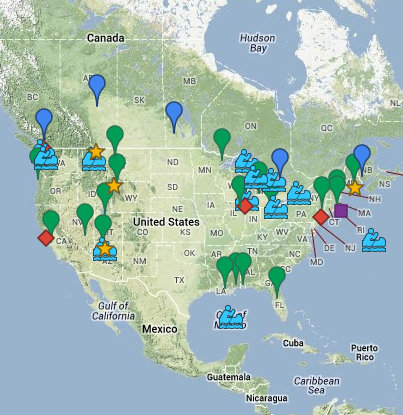Bartlett Cove is near Gustavus at the southern end of Glacier Bay and is about where Vancouver reported seeing the ice front when he passed in 1792. Today, you must head fifty miles or so up into Muir and Tarr Inlets to find glaciers that reach tidewater - an impressive retreat of the ice over a few hundred years. The advance of glaciers down Glacier Bay occurred during the so-called Little Ice Age of the middle part of the last millennium and this rapid melting began before industrial CO2 emissions began to rise. It is neither proof, nor disproof, of human caused climate changes - although both sides cynically use it to their advantage. It simply underscores the complexity of our climate system and the importance of recognizing long term variability in natural systems.
Large glaciers are heavy and press the earth's crust downward. When the ice melts, the crust rebounds, often quite quickly. This is a major influence on Glacier Bay's shoreline - Bartlett Cove may be shooting upward an inch or more a year (which translates to about 10 feet in the last century). This is hard to distinguish in an area subject to large tides and storms, but over time it lifts old shorelines and beaches out of the sea. In Bartlett Cove, the old shoreline marches up into the forest, or conversely, the forest appears to be marching out onto the shore. Grasses begin to occupy the areas removed from the influence of the highest tides and then eventually alder and then conifers appear.
In an era of concern about increasing sea level, it is ironic to be visiting shorelines that are rising faster than the ocean. These shorelines remind me of those I saw on Lake Huron in May, where water levels have also been falling. I'll have to wait until the Kenai Peninsula to look at shorelines where sea level has actually risen.

No comments:
Post a Comment